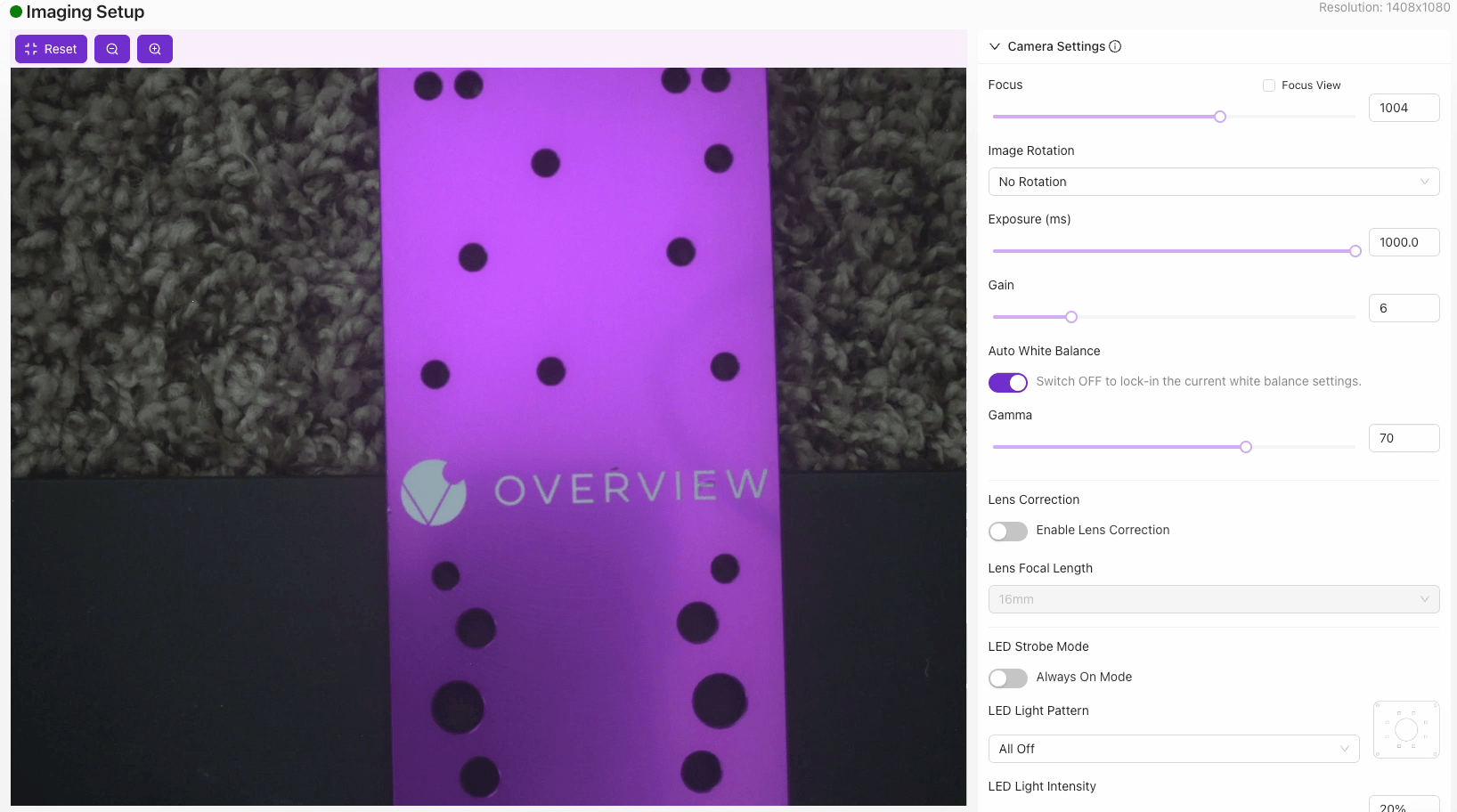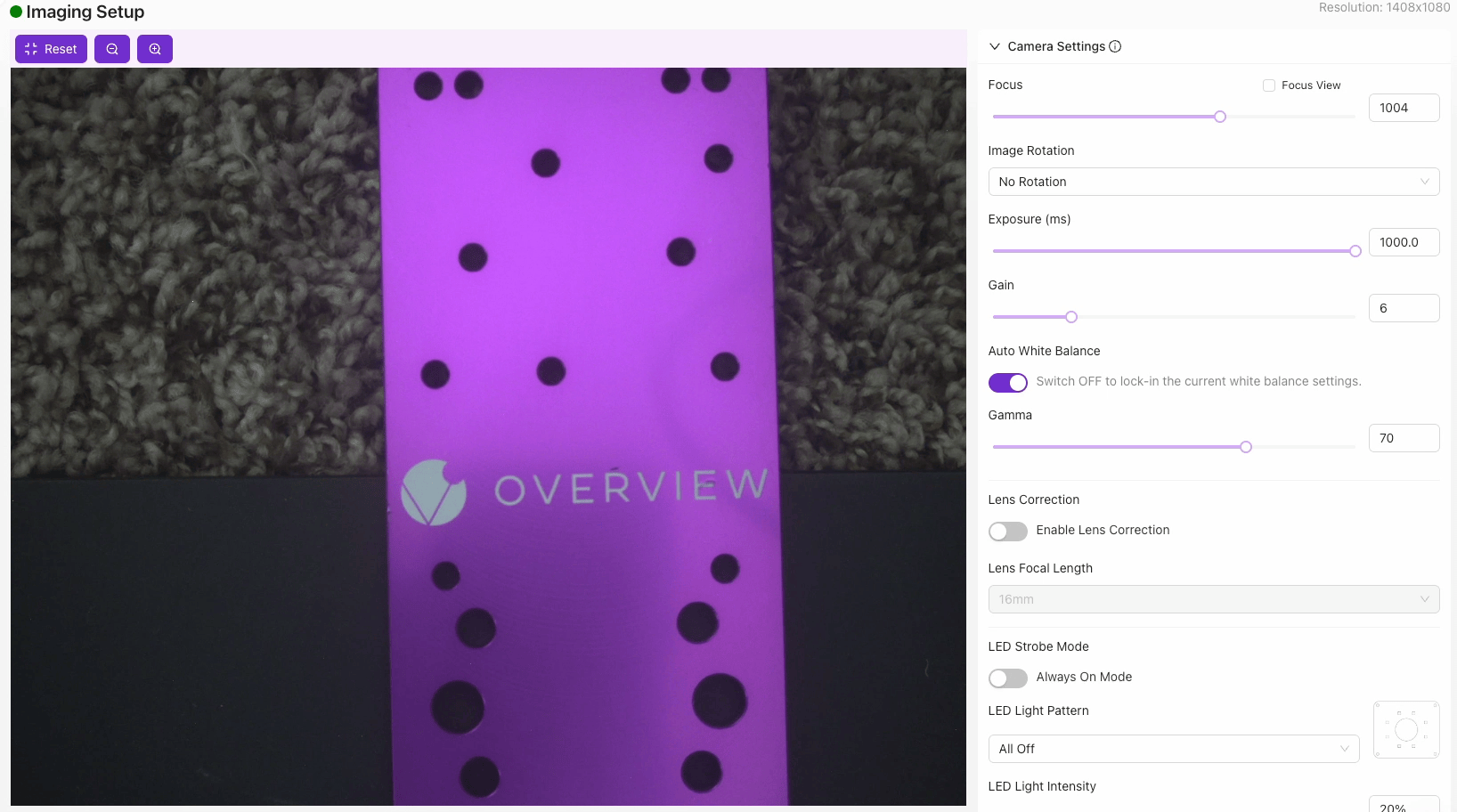Exposure, Gain & Processing Speed
This page explains how exposure, gain, and gamma settings influence image capture quality and inspection performance in the OV20i system. Proper tuning can balance speed, brightness, and model accuracy.
Exposure
Exposure time is how long the image sensor collects light for a frame.
| Setting | Effect |
|---|---|
| Short Exposure | Darker image, sharper motion capture |
| Long Exposure | Brighter image, risk of motion blur |
Exposure time directly affects cycle time.
Gain
Gain is a digital amplifier that brightens the image after light has been captured — like ISO on a DSLR.
| Setting | Effect |
|---|---|
| Low Gain | Clean image, may be too dark |
| High Gain | Brighter image, adds grain/noise |
Use gain to boost brightness without increasing exposure.
warningToo much gain can hurt classifier accuracy due to noise.
Gamma
Gamma adjusts the brightness curve of the image — enhancing contrast and mid-tones.
| Setting | Effect |
|---|---|
| Low Gamma (<1) | Boosts shadows, reduces highlights |
| High Gamma (>1) | Boosts highlights, flattens shadows |
| Gamma = 1 | Linear curve (no correction) |
Use gamma to fine-tune contrast after lighting and exposure are stable.
Impact on Processing Speed
| Setting | Affects Speed? | Why? |
|---|---|---|
| Exposure | ✅ Yes | Longer exposures = delayed capture |
| Gain | ❌ No | Post-capture adjustment |
| Gamma | ❌ No | Image processing step, minimal effect |
Only exposure directly delays image capture and total cycle time.
Timing Examples
| Condition | Exposure | Gain | Total Cycle Time |
|---|---|---|---|
| Bright Lighting | 2 ms | 5 dB | ~60 ms |
| Dim Lighting (Low Gain) | 6 ms | 0 dB | ~90 ms |
| Dim Lighting (High Gain) | 2 ms | 15 dB | ~60 ms |
| High Contrast w/ Gamma | 3 ms | 5 dB | ~65 ms |
✅ Best Practices
- ✅ Start with low exposure and moderate gain
- ✅ Use Test Image in the HMI to visualize lighting effects
- ✅ If parts are blurry, reduce exposure before changing gain
- ✅ Avoid excessive gain — keep noise low for better AI accuracy
- ✅ Gamma is best used for visual tuning, not brightness correction


